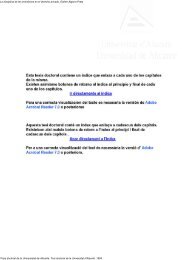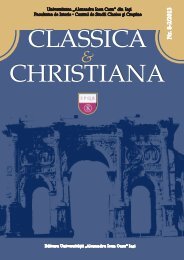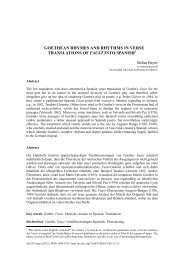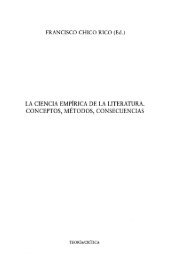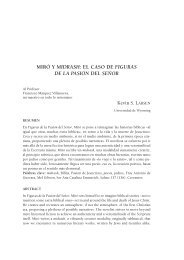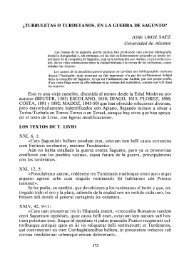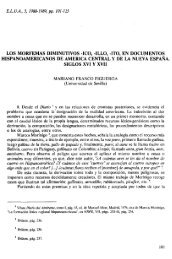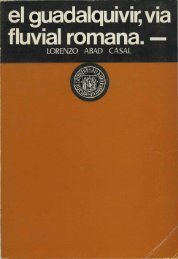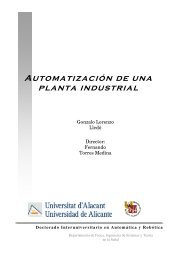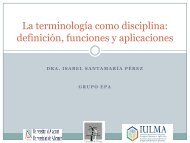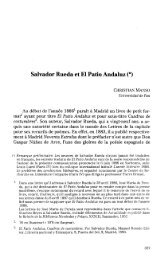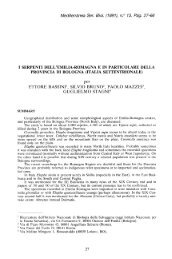ecological effects of marine protected areas empafish project ...
ecological effects of marine protected areas empafish project ...
ecological effects of marine protected areas empafish project ...
Create successful ePaper yourself
Turn your PDF publications into a flip-book with our unique Google optimized e-Paper software.
EMPAFISH Booklet no. 1 Ecological <strong>effects</strong> <strong>of</strong> Atlanto-Mediterranean MPAs in the EU<br />
Cerbère – Banyuls: <strong>ecological</strong> studies<br />
� General<br />
o Fish assemblage<br />
Fish assemblages have been extensively studied in the area since the first<br />
survey by Johann Bell in 1983, using underwater visual census (UVC) as main<br />
the sampling technique. The principal objective has been to study the fish<br />
structure in relation to protection from fishing. Several studies (Tito de Morais<br />
1980; Seloudre 1984) have been undertaken on the same objective leading to<br />
a check-list <strong>of</strong> fish species for the area (Jouvenel 1992, 1996). Some special<br />
emphasis has been devoted to the emblematic Mediterranean dusky grouper<br />
Epinephelus marginatus (Tissot 1998; Louisy et al. 2001)<br />
o Benthic communities<br />
A complete characterisation <strong>of</strong> the substratum <strong>of</strong> the entire MPA was<br />
undertaken in in 2001 (Ballesta 1997; Lenfant et al. 2001) with the objective<br />
to set a management plan for the MPA. Together with this global view,<br />
specific surveys were done in specific locations for Lithophyllum lichenoides<br />
(Fajon & Lestienne 1991), longterm dynamics <strong>of</strong> fucales (Thibaut et al. 2005),<br />
Posidonia oceanica beds (Pergent-Martini & Pergent 1989, Ballesta 1997,<br />
Claes 2000), red gorgonians (Martinie De Maisonneuve 1996), red coral (L'Œil<br />
d'Andromède 2004), Pina nobilis (Guille & Medionie 1996; Cazes & Gazeilles<br />
1997), sea urchins (Laspougeas 1994), the ascidian Microcosmus sp. (Monniot<br />
1965), and ichtyoplankton assemblage (Crec’hriou 2000).<br />
� Reserve effect (including genetic effect)<br />
o Fish assemblage<br />
Several surveys have been undertaken with the objective to quantify the<br />
impact <strong>of</strong> the MPA on the fish assemblage in the Cebère/Banyuls MPA. Most <strong>of</strong><br />
the studies come from UVC <strong>project</strong>s (Bell 1983; Jouvenel 1992; Cadoret<br />
1993; Licari 1993; Dufour et al. 1995; Hertel 1995; García Charton & Planes<br />
2002). Fish families responding the best to protection measures –by having<br />
higher abundance and/or biomass within the MPA, are serranid (groupers and<br />
combers) and sparid (sea-breams) species.<br />
Superimposed to the reserve effect, a “habitat effect” on ichty<strong>of</strong>auna is<br />
apparent, derived from the fact that this MPA harbour rocky habitats being<br />
more complex (due to the importance <strong>of</strong> crevices, hangs, vertical walls, etc.)<br />
than neighbouring un<strong>protected</strong> <strong>areas</strong>, which are more heterogeneous (by<br />
having a higher proportion <strong>of</strong> Posidonia and/or sand embedded in the rocky<br />
matrix), all these differences having a great influence on the structure <strong>of</strong> fish<br />
assemblage (García Charton & Planes 2002). Hence, some fish species<br />
appeared to be more abundant and/or big in size in un<strong>protected</strong> <strong>areas</strong> used<br />
as control sites (some labrids, other sparids, striped red mullet, etc.), because<br />
they show affinities for these heterogeneous bottoms.<br />
47



